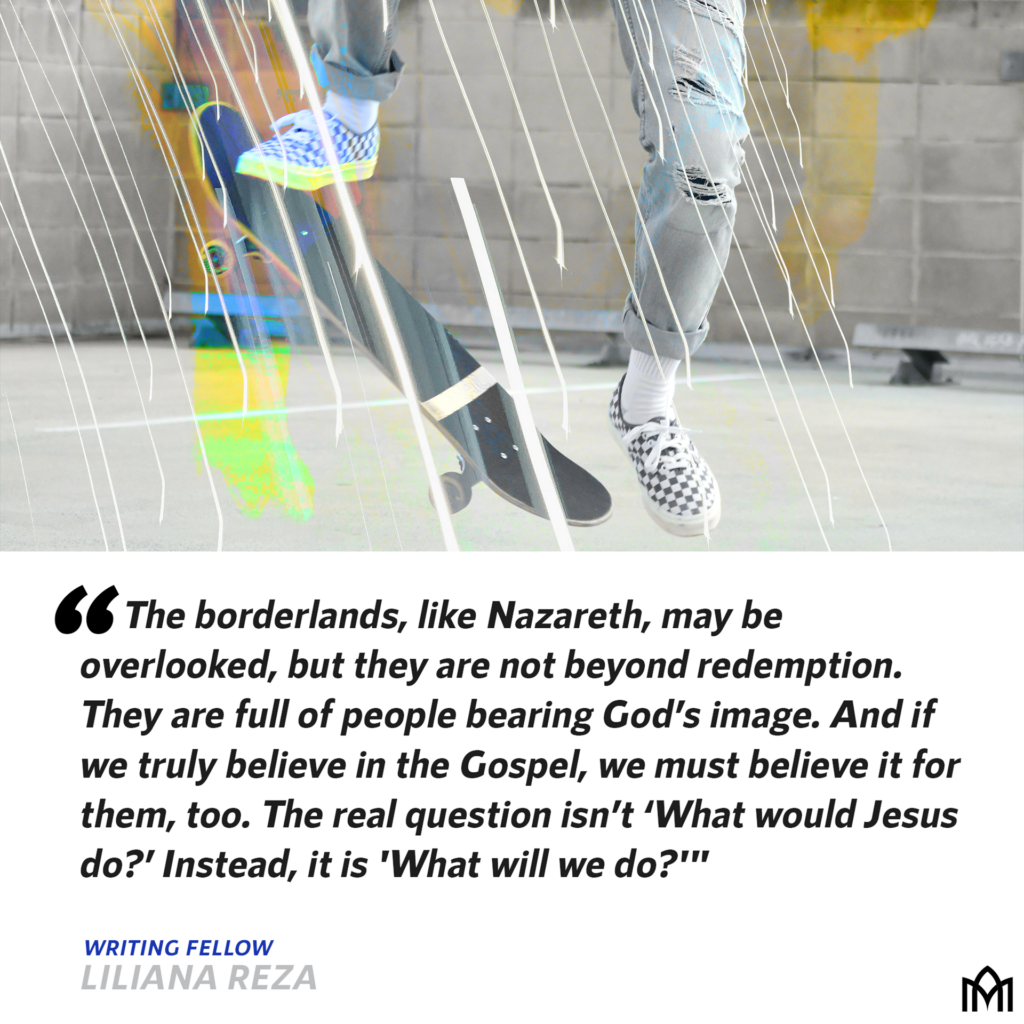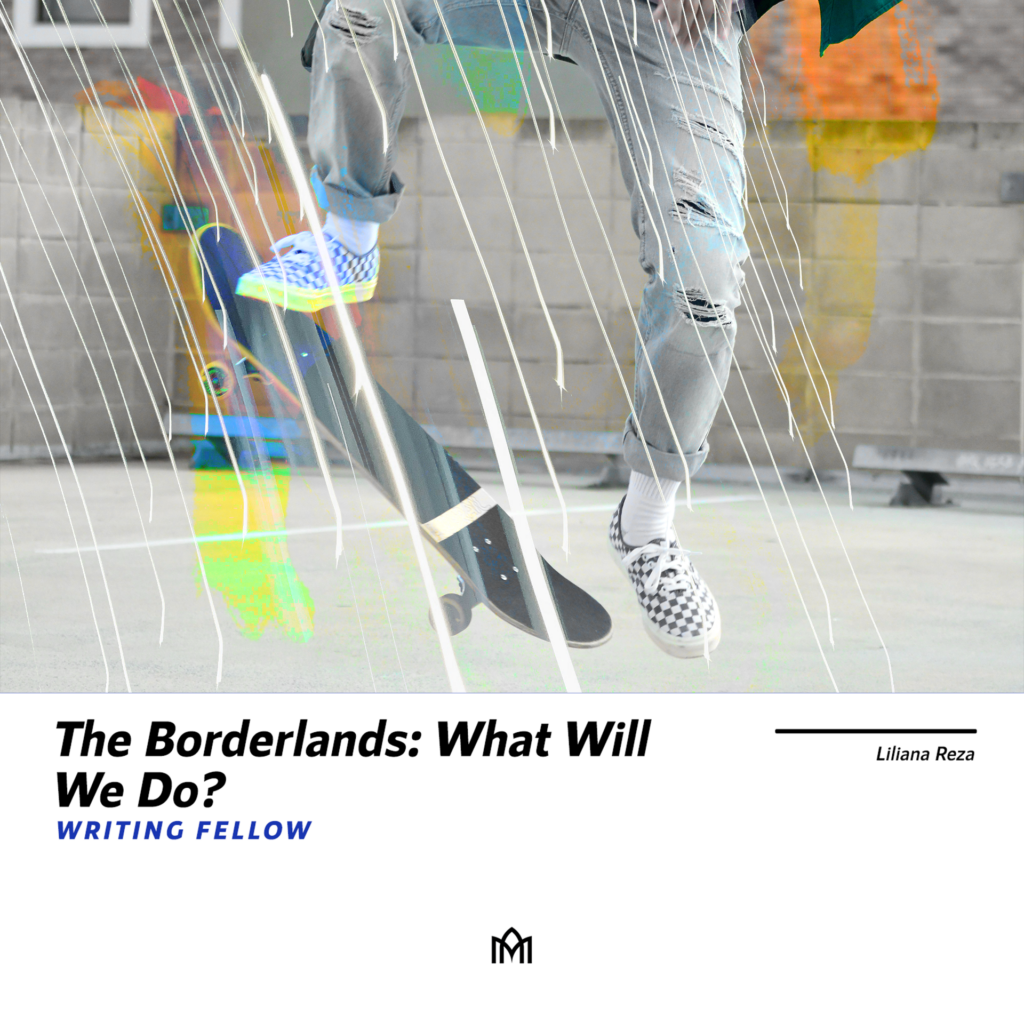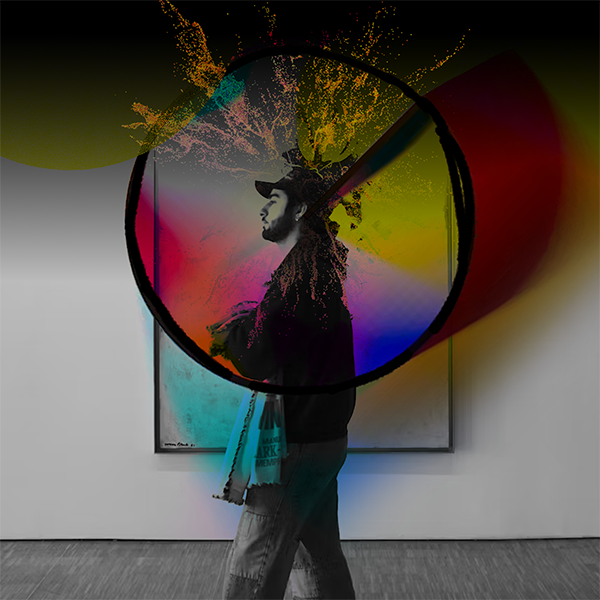The Borderlands: What Will We Do?
A Call for the Church to See, Love, and Act Like Jesus at the Borderlands
I grew up in the thick of the WWJD (“What Would Jesus Do?”) bracelet era. In the Bible Belt, those four letters weren’t merely a personal reminder; they were a social marker. Wearing one signaled who was “in” and who wasn’t, who was kind and welcoming, and who was committed—at least in appearance—to following Jesus. But looking back, I wonder: Did we ever really ask ourselves what Jesus would do? Or were we more concerned with the question of who belonged?
Now, as a humanitarian aid worker and human rights advocate, I find myself in the in-between places—the space between the church and the public square, between faith and advocacy, between hope and heartbreak. And if I’m honest, it’s been hard. Hard to know who my people are. Hard to discern who truly cares about justice for the long haul, not just when it’s convenient. Hard to know how and when to speak.
But I do know this: I have spent my life navigating the borderlands—both literal and spiritual. My family is from a border town, and though I grew up in Oklahoma, the U.S.–Mexico border was a second home. We’d drive down south on weekends, summers, and holidays to be with family. Later, as a college student, I spent those same breaks volunteering alongside the church, offering my hands and heart to a place that had always called me back. Even as headlines about H1N1, the disappearance of women, and cartel violence surged, I returned. Because despite what the news cycle says, the border is not only a place of crisis—it is a place of life, of resilience, and of deep and abiding faith.
Yet today, the response to those arriving at our southern border tells a different story. The recent halt of the refugee resettlement program and the suspension of the CBP One app—until recently, the legal tool used to request an appointment at a lawful port of entry to begin an asylum request—under current executive orders are perfect examples of what it looks like to ignore and be indifferent to the surging realities of displacement in the world. While the number of migrants arriving at the U.S.–Mexico border hit a historic high in 2023, with approximately 2.5 million encounters, this trend is not an isolated crisis. Rather, it is a reflection of a global reality. Right now, more than 120 million people worldwide are forcibly displaced.1As NPR reports on the UNHCR report, nearly 120 million people were displaced around the world in 2023. These are not just numbers; they are families, children, and individuals seeking safety.
As Christians, we cannot afford to be indifferent to them.
As a humanitarian aid worker and human rights advocate, I find myself in the in-between places—the space between the church and the public square, between faith and advocacy, between hope and heartbreak. It’s been hard. (1/3) Share on X
Hard to know who my people are. Hard to discern who truly cares about justice for the long haul, not just when it’s convenient. Hard to know how and when to speak. (2/3) Share on X
Right now, more than 120 million people worldwide are forcibly displaced. These are not just numbers; they are families, children, and individuals seeking safety. As Christians, we cannot afford to be indifferent to them. (3/3) Share on X
The CBP One app, despite its flaws—its language limitations, unreliable geolocation tracking, and frequent technical failures—offered a sliver of hope to those navigating the uncertainty and fear of migration. It was a way to seek asylum without ever violating a U.S. law, to “wait your turn” as many American politicians have insisted immigrants and asylum seekers do, despite the dangers urgently chasing them out of their homelands. The sudden suspension of this lawful process and of essentially all access to asylum along the border leave countless asylum seekers stranded, with nowhere to turn.
For decades, the U.S. has been a place of refuge for the persecuted. Our laws have enshrined protections for those fleeing violence, war, and oppression. But fear-driven politics threatens to erode that legacy.
As followers of Christ, we must ask: What is shaping our response—our faith or our fear?
Despite what the news cycle says, the border is not only a place of crisis—it is a place of life, of resilience, and of deep and abiding faith. Share on X
“Can anything good come from Nazareth?” That’s what they asked about Jesus’ hometown (John 1:46). I hear echoes of that question in the way people talk about the borderlands. The borderlands is a place easily dismissed, feared, and politicized. But I have seen the goodness of God in the faces of those who cross, those who welcome, and those who stand in the gap. The border is not a wasteland. It is a holy place—a place of encounter, where the least of these are not forgotten by God, even if they are ignored by the world.
And so I return to that childhood question: What would Jesus do? Would He build walls or break bread? Would He turn away the weary or say, “Come to me, all who are weary and burdened, and I will give you rest” (Matthew 11:28)? Would He enforce exclusion or embody radical welcome?
I think of the Good Samaritan (Luke 10:30-37), a parable that reminds us faith is not about proximity but action. The priest and the Levite—both religious leaders—saw suffering and walked away. It was the outsider, the Samaritan, who stopped, bound wounds, and showed mercy to a vulnerable stranger in need. He is Jesus’ model of what it looks like to fulfill the Great Commandment to love God and love one’s neighbor.
So I ask the church: Where do we stand? Are we the ones walking away, justifying our indifference with politics and fear? Or will we be like the Samaritan, seeing Christ in the wounded traveler?
The borderlands, like Nazareth, may be overlooked, but they are not beyond redemption. The borderlands are full of people bearing God’s image. And if we truly believe in the Gospel, we must believe it for them, too.
The real question for Christ-followers isn’t “What would Jesus do?” Instead, it is more direct: What will we do?
///
For decades, the U.S. has been a place of refuge for the persecuted. Our laws have enshrined protections for those fleeing violence, war, and oppression. But fear-driven politics threatens to erode that legacy. (1/3) Share on X
The borderlands is a place easily dismissed, feared, and politicized. But I have seen the goodness of God in the faces of those who cross, those who welcome, and those who stand in the gap. (2/3) Share on X
The border is not a wasteland. It is a holy place—a place of encounter, where the least of these are not forgotten by God, even if they are ignored by the world. (3/3) Share on X
*Editorial Note: Liliana’s first piece for Missio Alliance as a 2024 Writing Fellow was a compassionate and compelling case for justice and mercy at the Southern Border, entitled Acompañamiento: The Sacred Between Us. Stay tuned for more from her later this year! ~CK





